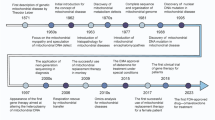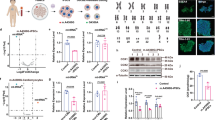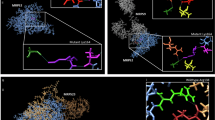Abstract
The mitochondrial translation system is responsible for the synthesis of 13 proteins required for oxidative phosphorylation (OXPHOS), the major energy-generating process of our cells. Mitochondrial translation is controlled by various nuclear encoded proteins. In 27 patients with combined OXPHOS deficiencies, in whom complex II (the only complex that is entirely encoded by the nuclear DNA) showed normal activities, and mutations in the mitochondrial genome as well as polymerase gamma were excluded, we screened all mitochondrial translation factors for mutations. Here, we report a mutation in mitochondrial elongation factor G1 (GFM1) in a patient affected by severe, rapidly progressive mitochondrial encephalopathy. This mutation is predicted to result in an Arg250Trp substitution in subdomain G' of the elongation factor G1 protein and is presumed to hamper ribosome-dependent GTP hydrolysis. Strikingly, the decrease in enzyme activities of complex I, III and IV detected in patient fibroblasts was not found in muscle tissue. The OXPHOS system defects and the impairment in mitochondrial translation in fibroblasts were rescued by overexpressing wild-type GFM1, establishing the GFM1 defect as the cause of the fatal mitochondrial disease. Furthermore, this study evinces the importance of a thorough diagnostic biochemical analysis of both muscle tissue and fibroblasts in patients suspected to suffer from a mitochondrial disorder, as enzyme deficiencies can be selectively expressed.
Similar content being viewed by others
Log in or create a free account to read this content
Gain free access to this article, as well as selected content from this journal and more on nature.com
or
Accession codes
References
Schaefer AM, Taylor RW, Turnbull DM, Chinnery PF : The epidemiology of mitochondrial disorders—past, present and future. Biochim Biophys Acta 2004; 1659: 115–120.
Lochmuller H, Johns T, Shoubridge EA : Expression of the E6 and E7 genes of human papillomavirus (HPV16) extends the life span of human myoblasts. Exp Cell Res 1999; 248: 186–193.
Janssen AJ, Smeitink JA, van den Heuvel LP : Some practical aspects of providing a diagnostic service for respiratory chain defects. Ann Clin Biochem 2003; 40: 3–8.
Smeitink J, Sengers R, Trijbels F, van den Heuvel L : Human NADH:ubiquinone oxidoreductase. J Bioenerg Biomembr 2001; 33: 259–266.
Janssen AJ, Trijbels FJ, Sengers RC et al: Measurement of the energy-generating capacity of human muscle mitochondria: diagnostic procedure and application to human pathology. Clin Chem 2006; 52: 860–871.
Miller SA, Dykes DD, Polesky HF : A simple salting out procedure for extracting DNA from human nucleated cells. Nucleic Acids Res 1988; 16: 1215.
Hansson S, Singh R, Gudkov AT, Liljas A, Logan DT : Structural insights into fusidic acid resistance and sensitivity in EF-G. J Mol Biol 2005; 348: 939–949.
Krieger E, Koraimann G, Vriend G : Increasing the precision of comparative models with YASARA NOVA—a self-parameterizing force field. Proteins 2002; 47: 393–402.
Schagger H, von Jagow G : Blue native electrophoresis for isolation of membrane protein complexes in enzymatically active form. Anal Biochem 1991; 199: 223–231.
Klement P, Nijtmans LG, van den Bogert C, Houstek J : Analysis of oxidative phosphorylation complexes in cultured human fibroblasts and amniocytes by blue-native-electrophoresis using mitoplasts isolated with the help of digitonin. Anal Biochem 1995; 231: 218–224.
Ugalde C, Vogel R, Huijbens R, van den Heuvel B, Smeitink J, Nijtmans L : Human mitochondrial complex I assembles through the combination of evolutionary conserved modules: a framework to interpret complex I deficiencies. Hum Mol Genet 2004; 13: 2461–2472.
Antonicka H, Sasarman F, Kennaway NG, Shoubridge EA : The molecular basis for tissue specificity of the oxidative phosphorylation deficiencies in patients with mutations in the mitochondrial translation factor EFG1. Hum Mol Genet 2006; 15: 1835–1846.
Leary SC, Sasarman F : Oxidative phosphorylation: synthesis of mitochondrially encoded proteins and assembly of individual structural subunits into functional holoenzyme complexes. Methods Mol Biol 2009; 554: 143–162.
Wintermeyer W, Peske F, Beringer M, Gromadski KB, Savelsbergh A, Rodnina MV : Mechanisms of elongation on the ribosome: dynamics of a macromolecular machine. Biochem Soc Trans 2004; 32: 733–737.
Gao YG, Selmer M, Dunham CM, Weixlbaumer A, Kelley AC, Ramakrishnan V : The structure of the ribosome with elongation factor G trapped in the posttranslocational state. Science 2009; 326: 694–699.
Nechifor R, Wilson KS : Crosslinking of translation factor EF-G to proteins of the bacterial ribosome before and after translocation. J Mol Biol 2007; 368: 1412–1425.
Diaconu M, Kothe U, Schlunzen F et al: Structural basis for the function of the ribosomal L7/12 stalk in factor binding and GTPase activation. Cell 2005; 121: 991–1004.
Savelsbergh A, Mohr D, Kothe U, Wintermeyer W, Rodnina MV : Control of phosphate release from elongation factor G by ribosomal protein L7/12. EMBO J 2005; 24: 4316–4323.
Nechifor R, Murataliev M, Wilson KS : Functional interactions between the G′ subdomain of bacterial translation factor EF-G and ribosomal protein L7/L12. J Biol Chem 2007; 282: 36998–37005.
Coenen MJ, Antonicka H, Ugalde C et al: Mutant mitochondrial elongation factor G1 and combined oxidative phosphorylation deficiency. N Engl J Med 2004; 351: 2080–2086.
Valente L, Tiranti V, Marsano RM et al: Infantile encephalopathy and defective mitochondrial DNA translation in patients with mutations of mitochondrial elongation factors EFG1 and EFTu. Am J Hum Genet 2007; 80: 44–58.
Janssen AJ, Schuelke M, Smeitink JA et al: Muscle 3243A—>G mutation load and capacity of the mitochondrial energy-generating system. Ann Neurol 2008; 63: 473–481.
Smeitink JA, Elpeleg O, Antonicka H et al: Distinct clinical phenotypes associated with a mutation in the mitochondrial translation elongation factor EFTs. Am J Hum Genet 2006; 79: 869–877.
Acknowledgements
This work was supported by the European Union's Sixth Framework Program, contract number LSHMCT-2004-005260 (MITOCIRCLE). We thank Benigna Geurts (Nijmegen Center for Mitochondrial Disorders) for performing sequence analysis of GFM1 on control samples.
Author information
Authors and Affiliations
Corresponding author
Ethics declarations
Competing interests
The authors declare no conflict of interest.
Rights and permissions
About this article
Cite this article
Smits, P., Antonicka, H., van Hasselt, P. et al. Mutation in subdomain G' of mitochondrial elongation factor G1 is associated with combined OXPHOS deficiency in fibroblasts but not in muscle. Eur J Hum Genet 19, 275–279 (2011). https://doi.org/10.1038/ejhg.2010.208
Received:
Revised:
Accepted:
Published:
Issue date:
DOI: https://doi.org/10.1038/ejhg.2010.208
Keywords
This article is cited by
-
Multisystem mitochondrial diseases due to mutations in mtDNA-encoded subunits of complex I
BMC Pediatrics (2020)
-
Expanding the Phenotype of the Founder South Asian Mutation in the Nuclear Encoding Mitochondrial RMND1 Gene
The Indian Journal of Pediatrics (2018)
-
The clinical maze of mitochondrial neurology
Nature Reviews Neurology (2013)



